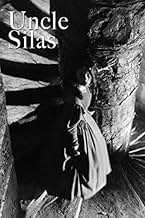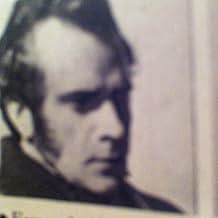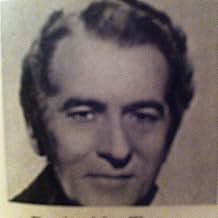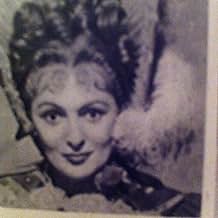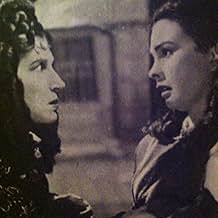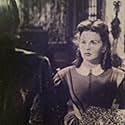AVALIAÇÃO DA IMDb
6,6/10
862
SUA AVALIAÇÃO
Adicionar um enredo no seu idiomaFollowing her father's death, a teenage British heiress goes to live with her guardian uncle--who is broke and schemes to murder her for her inheritance.Following her father's death, a teenage British heiress goes to live with her guardian uncle--who is broke and schemes to murder her for her inheritance.Following her father's death, a teenage British heiress goes to live with her guardian uncle--who is broke and schemes to murder her for her inheritance.
- Direção
- Roteiristas
- Artistas
- Direção
- Roteiristas
- Elenco e equipe completos
- Produção, bilheteria e muito mais no IMDbPro
Avaliações em destaque
This moody version of Joseph Sheridan Le Fanu's classic Gothic novel is quite simply one of the most accomplished British films of the 1940's.
With cinematography reminiscent of (and rivaling)that seen in David Lean's "Great Expectations," it is a pity that this picture is not better known.
This may accrue from the fact that an American, heavily edited, and re-titled version ("The Inheritance") is the only print in U.S. circulation.
At all costs avoid this butcher job, as the 6 minutes of missing footage are very germane to the story's narrative, mood and imagery.
Jean Simmons is a reminder of yet another lost dramatic staple--a decorous, demure heroine, who speaks in complete sentences with flawless diction. Her lady like deportment combined with her unquestioned loveliness makes her a very sympathetic Lady Caroline. Mr. De Marney is similarly impressive as the sinister, titular character.
But the film belongs to Katina Paxinou as the redoubtable Madame De La Rougierre. I believe Mr. Le Fanu would approve of her performance. In any case, her first appearance, as depicted with her malignant face peering through a rain lashed window pane, is as startling an entrance as one could hope for.
Laurence Irving's art direction is superb, (and some of his sketches for this film are included in Edward Carrick's "Art and Design in the British Film," Dennis Dobson, London) fully realizing, as it does, the stories' atmospheric requirements, and amply demonstrating how superior sound stages are to location shooting.
All told, this picture stands favorably alongside Thorold Dickinson's "Queen of Spades," Terence Young's "Corridor of Mirrors," Anthony Pelissier's "Rocking Horse Winner," Leslie Arliss' "Night Has Eyes," Jacques Tourneur's "Experiment Perilous," and Martin Gabel's "The Lost Moment," as one of a small group of visually distinguished Gothic melodramas of the 1940's, and far superior to the more recent television version, which despite the welcome presence of Peter O'Toole and Barbara Shelley lacks both flavor and mood.
With cinematography reminiscent of (and rivaling)that seen in David Lean's "Great Expectations," it is a pity that this picture is not better known.
This may accrue from the fact that an American, heavily edited, and re-titled version ("The Inheritance") is the only print in U.S. circulation.
At all costs avoid this butcher job, as the 6 minutes of missing footage are very germane to the story's narrative, mood and imagery.
Jean Simmons is a reminder of yet another lost dramatic staple--a decorous, demure heroine, who speaks in complete sentences with flawless diction. Her lady like deportment combined with her unquestioned loveliness makes her a very sympathetic Lady Caroline. Mr. De Marney is similarly impressive as the sinister, titular character.
But the film belongs to Katina Paxinou as the redoubtable Madame De La Rougierre. I believe Mr. Le Fanu would approve of her performance. In any case, her first appearance, as depicted with her malignant face peering through a rain lashed window pane, is as startling an entrance as one could hope for.
Laurence Irving's art direction is superb, (and some of his sketches for this film are included in Edward Carrick's "Art and Design in the British Film," Dennis Dobson, London) fully realizing, as it does, the stories' atmospheric requirements, and amply demonstrating how superior sound stages are to location shooting.
All told, this picture stands favorably alongside Thorold Dickinson's "Queen of Spades," Terence Young's "Corridor of Mirrors," Anthony Pelissier's "Rocking Horse Winner," Leslie Arliss' "Night Has Eyes," Jacques Tourneur's "Experiment Perilous," and Martin Gabel's "The Lost Moment," as one of a small group of visually distinguished Gothic melodramas of the 1940's, and far superior to the more recent television version, which despite the welcome presence of Peter O'Toole and Barbara Shelley lacks both flavor and mood.
Historical melodrama ("The Man in Grey", "The Wicked Lady", "Jassy", "Blanche Fury") was a popular genre in the British cinema of the forties, and "Uncle Silas", based upon a novel by Sheridan Le Fanu, is another example. (These films had their equivalents in the American cinema, such as "Dragonwyck"). The action takes place in the mid 19th century. The heroine, Caroline Ruthyn is a sixteen-year-old heiress. When her widowed father dies, his will appoints his younger brother Silas as her guardian. In his youth Silas had a reputation as a rake, but now everyone believes him to be a reformed character. The truth, however, is that he has only abandoned his debauched lifestyle because of failing health and dwindling finances, not because of a genuine change of heart. He greets Caroline warmly, but his affection for her is only feigned, and he is secretly plotting to get his hands on her fortune.
Some melodramas from this period, such as "Jassy" and "Blanche Fury", were made in colour, and can be seen as predecessors of the more recent "heritage cinema" movement. "Uncle Silas", however, was made in black-and-white, possibly to emphasise the Gothic elements of the story. It mostly lacks the element of bodice-ripping sexual passion which is strongly implied, if not always made explicit, in films like "The Man in Grey" or "The Wicked Lady". The only character who is chiefly motivated by sexual desire is Silas's dissolute son Dudley and his passion, for his cousin Caroline, is not returned. (Far from it. Caroline loathes Dudley and has no illusions about his true nature, even though she is still under an illusion about the true nature of his father Silas).
There are certain similarities between this film and the American-made "Dragonwyck", made the previous year. Both were set at around the same period in history and both feature a beautiful, innocent brunette heroine (Jean Simmons here, Gene Tierney in "Dragonwyck") who goes to live with a sinister relative in a gloomy Gothic mansion. There is an obvious contrast between the spacious, airy Georgian stately home which Caroline inherits from her father and Silas's ramshackle, tumbledown mediaeval or Tudor manor house. (As an impoverished younger son, he presumably cannot afford anything more commodious). At first the girl is deceived as to her relative's character- in "Dragonwyck" the heroine, Miranda, even goes so far as to marry her distant cousin Nicholas- but his true nature eventually emerges and she finds herself in danger.
The difference between this film and "Dragonwyck" lies in the way it is acted. As another reviewer has pointed out the good characters- Caroline, her father and her admirer Lord Richard Ilbury- are all played straight, whereas the evil ones- Silas, Dudley and their sidekick, Caroline's former governess, Madame de la Rougierre- are all to some extent melodramatic caricatures. The main villain in "Dragonwyck", Nicholas, is not caricatured in this way. Katina Paxinou as Madame de la Rougierre perhaps goes too far over the top, and Dudley, whose role is not a large one, is a sort of bargain-basement Squire Jasper. Derrick De Marney, however, makes a splendid villain as Silas. He was only in his early forties in 1947, but looks much older, and it is difficult to believe that he is the same man who had played the handsome young male lead in Hitchcock's "Young and Innocent" only a decade earlier. On the virtuous side, Simmons makes a luminously lovely heroine, and there is a good performance from Reginald Tate as Caroline's father Austin. The devoutly Christian Austin Ruthyn is a good man, but suffers from a character defect common among good people- he is so noble and upright that he cannot understand, or even conceive of the existence of, anyone who is less noble and upright than himself.
Today, melodramas like this one can come across as dated, with their exaggerated emotion and exaggeratedly black-and-white view of the world, represented here by the contrast between the good and the evil characters. Barbara and the saintly Caroline. Yet to anyone prepared to make allowances for the differences between contemporary tastes and those of seventy years ago, a film like "Uncle Silas" can be seen as a fine example of a once-fashionable style of film-making. 7/10.
Some melodramas from this period, such as "Jassy" and "Blanche Fury", were made in colour, and can be seen as predecessors of the more recent "heritage cinema" movement. "Uncle Silas", however, was made in black-and-white, possibly to emphasise the Gothic elements of the story. It mostly lacks the element of bodice-ripping sexual passion which is strongly implied, if not always made explicit, in films like "The Man in Grey" or "The Wicked Lady". The only character who is chiefly motivated by sexual desire is Silas's dissolute son Dudley and his passion, for his cousin Caroline, is not returned. (Far from it. Caroline loathes Dudley and has no illusions about his true nature, even though she is still under an illusion about the true nature of his father Silas).
There are certain similarities between this film and the American-made "Dragonwyck", made the previous year. Both were set at around the same period in history and both feature a beautiful, innocent brunette heroine (Jean Simmons here, Gene Tierney in "Dragonwyck") who goes to live with a sinister relative in a gloomy Gothic mansion. There is an obvious contrast between the spacious, airy Georgian stately home which Caroline inherits from her father and Silas's ramshackle, tumbledown mediaeval or Tudor manor house. (As an impoverished younger son, he presumably cannot afford anything more commodious). At first the girl is deceived as to her relative's character- in "Dragonwyck" the heroine, Miranda, even goes so far as to marry her distant cousin Nicholas- but his true nature eventually emerges and she finds herself in danger.
The difference between this film and "Dragonwyck" lies in the way it is acted. As another reviewer has pointed out the good characters- Caroline, her father and her admirer Lord Richard Ilbury- are all played straight, whereas the evil ones- Silas, Dudley and their sidekick, Caroline's former governess, Madame de la Rougierre- are all to some extent melodramatic caricatures. The main villain in "Dragonwyck", Nicholas, is not caricatured in this way. Katina Paxinou as Madame de la Rougierre perhaps goes too far over the top, and Dudley, whose role is not a large one, is a sort of bargain-basement Squire Jasper. Derrick De Marney, however, makes a splendid villain as Silas. He was only in his early forties in 1947, but looks much older, and it is difficult to believe that he is the same man who had played the handsome young male lead in Hitchcock's "Young and Innocent" only a decade earlier. On the virtuous side, Simmons makes a luminously lovely heroine, and there is a good performance from Reginald Tate as Caroline's father Austin. The devoutly Christian Austin Ruthyn is a good man, but suffers from a character defect common among good people- he is so noble and upright that he cannot understand, or even conceive of the existence of, anyone who is less noble and upright than himself.
Today, melodramas like this one can come across as dated, with their exaggerated emotion and exaggeratedly black-and-white view of the world, represented here by the contrast between the good and the evil characters. Barbara and the saintly Caroline. Yet to anyone prepared to make allowances for the differences between contemporary tastes and those of seventy years ago, a film like "Uncle Silas" can be seen as a fine example of a once-fashionable style of film-making. 7/10.
UNCLE SILAS (called THE INHERITANCE upon initial release in the United States) fits well into the 1940s cycle of British adaptations of classic Victorian literature. Think David Lean's Dickens movies or the Alaistair Sims A CHRISTMAS CAROL, films which use gorgeous black and white photography and a blend of realism and melodrama to bring these gothic worlds to life.
Of course, UNCLE SILAS hasn't the literary pedigree of a Dickens' work: it is quite a sensational narrative, as close to the first-wave of gothic novels from the 18th century as Victorian gothic literature gets. For the trouble of being pretty and expecting a fortune when she comes of age, the heroine Caroline is threatened by a series of sinister forces connected with her Uncle Silas, a former rake and current drug addict who needs money badly to pay off his debts. He initially tries to get her to marry his lecherous son, but when Caroline makes it loud and clear that she won't do so, his methods turn ever more cruel and murderous.
UNCLE SILAS nails the gothic mood perfectly, showing the decay of Caroline's sunny adolescence as she loses her father and falls into the hands of evil. There is a wonderful symmetry in this progression-- the film begins with a close-up of the wide-eyed Caroline and ends with a similar close-up, now emphasizing her lost innocence after barely surviving the events of the film. Jean Simmons makes the perfect gothic heroine: beautiful, spunky, and virtuous, all without coming off as cloying or too dumb to live, a rare feat for this sort of story. The music is dramatic and spooky.
So why isn't the film the equal of, say, Lean's GREAT EXPECTATIONS or OLIVER TWIST? Mainly, it has to do with two things: pacing and the villains. I love a good slow burn, especially in creepy fare, but some of the middle section of UNCLE SILAS is too slow for its own good, probably because a few of these scenes lack the sinister presence of the forces pursuing Caroline and her money.
Secondly, the villains of the story are an uneven bunch. The sexually aggressive son and the ghastly governess are both slightly comical in presentation, but manage some level of menace when terrorizing Caroline. The son makes it clear he could physically overpower Caroline without a problem and what his intentions are for her, and the governess has a garish, harsh appearance and witch-like personality which would not feel out of place in a child's nightmare. Unfortunately, Uncle Silas himself is not scary at all. He is at times enjoyably camp and I'll never say no to a good ham-fest, but he's never truly frightening, often acting more like a whiny cartoon villain than the decadent, ruthless beast he is supposed to be.
I think the inconsistent sense of dread and menace is what brings UNCLE SILAS down a few pegs. It's still a good movie and one I would recommend to other classic film fans though, as its virtues outweigh its shortcomings.
Of course, UNCLE SILAS hasn't the literary pedigree of a Dickens' work: it is quite a sensational narrative, as close to the first-wave of gothic novels from the 18th century as Victorian gothic literature gets. For the trouble of being pretty and expecting a fortune when she comes of age, the heroine Caroline is threatened by a series of sinister forces connected with her Uncle Silas, a former rake and current drug addict who needs money badly to pay off his debts. He initially tries to get her to marry his lecherous son, but when Caroline makes it loud and clear that she won't do so, his methods turn ever more cruel and murderous.
UNCLE SILAS nails the gothic mood perfectly, showing the decay of Caroline's sunny adolescence as she loses her father and falls into the hands of evil. There is a wonderful symmetry in this progression-- the film begins with a close-up of the wide-eyed Caroline and ends with a similar close-up, now emphasizing her lost innocence after barely surviving the events of the film. Jean Simmons makes the perfect gothic heroine: beautiful, spunky, and virtuous, all without coming off as cloying or too dumb to live, a rare feat for this sort of story. The music is dramatic and spooky.
So why isn't the film the equal of, say, Lean's GREAT EXPECTATIONS or OLIVER TWIST? Mainly, it has to do with two things: pacing and the villains. I love a good slow burn, especially in creepy fare, but some of the middle section of UNCLE SILAS is too slow for its own good, probably because a few of these scenes lack the sinister presence of the forces pursuing Caroline and her money.
Secondly, the villains of the story are an uneven bunch. The sexually aggressive son and the ghastly governess are both slightly comical in presentation, but manage some level of menace when terrorizing Caroline. The son makes it clear he could physically overpower Caroline without a problem and what his intentions are for her, and the governess has a garish, harsh appearance and witch-like personality which would not feel out of place in a child's nightmare. Unfortunately, Uncle Silas himself is not scary at all. He is at times enjoyably camp and I'll never say no to a good ham-fest, but he's never truly frightening, often acting more like a whiny cartoon villain than the decadent, ruthless beast he is supposed to be.
I think the inconsistent sense of dread and menace is what brings UNCLE SILAS down a few pegs. It's still a good movie and one I would recommend to other classic film fans though, as its virtues outweigh its shortcomings.
This little known film disappeared into obscurity and without much comment after its release in 1947. It has resurfaced on British TV in recent years where it has been given several matinee showings. BBC readapted the Sheridan Le Fanu novel as "The Dark Angel" for its classic novel Christmas offering in 1987. In Peter O'Toole they found a much more striking eponymous villain than Derrick de Marney but in every other sense it is the monochrome 'forties version that gives me the stronger pleasure. How could if fail with a heroine as touchingly vulnerable as Jeans Simmons at her most enchanting. The pair that later directed her in "So Long at the Fair" must have known of "Uncle Silas" when they opened their film with a similar wondrous closeup to our first encounter with her here. I know nothing of the director Charles Frank apart from "Uncle Silas" but the hands of a talented craftsman are clearly at the helm of this atmospheric adaptation of the Victorian Gothic melodrama about a dastardly uncle's attempt to wrest an inheritance from his trusting young niece. It is a pity that Derrick de Marney's hammy performance does not resonate with a greater sense of evil, but there is compensation in his confidante, Madame de la Rougierre who, in the hands of Katrina Paxinau, is one of cinema's most sinister female monsters. I was not disappointed when the sequence that had so fascinated me as an impressionable adolescent, where the evil governess embarks with her young charge on a journey of deception, emerged as powerfully as ever after a gap of so many years. The clock chimes of Bartram Manor that conclude this episode, like the huntsman's cry of "Gone to Earth" in the Powell and Pressburger masterpiece are among my most haunting cinematic memories. I often wonder if young audiences of today find similar marvels in the films made for them.
I saw this film years ago as "The Inheritance," and I never forgot it. When I read the description of "Uncle Silas," I thought it sounded suspiciously like "The Inheritance" - after all, did Jean Simmons go around playing one young heir after another? After seeing it again, I'm not surprised I remembered it.
"Uncle Silas" is a Gothic thriller, based on a novel by Sheridan Le Fanu, and directed by Charles Frank, who also directed "So Long at the Fair," another wonderful film. "Uncle Silas" is the story of a young heiress, Caroline Ruthyn (Simmons) who is sent to live with her uncle (Derrick De Marney) in a dark, eerie mansion after her father's death. Her father adored his brother, who was once accused of murder, and has made Carolina a ward of Silas. However, as he's dying, he tries to change this provision, but dies before he can do it. Silas, with the help of Caroline's ex-governess (Katina Paxinou) plan to get rid of Caroline, since the inheritance then passes to him.
The acting of especially DeMarney and Paxinou is fairly over the top, but I believe this was intentional on the part of the director to give it that good old scary Gothic feel. Sinister characters often aren't very subtle in Gothic books. Jean Simmons is lovely as Catherine - vulnerable, sweet, and naive, making her a perfect target of danger.
This story was remade as "The Dark Angel" back in the '80s - I remember the sets being completely overdone, a kind of Gothic version of Liberace's house. I don't remember much else, but I'm sure O'Toole was marvelous as Silas.
As others have pointed out, the British version is recommended.
"Uncle Silas" is a Gothic thriller, based on a novel by Sheridan Le Fanu, and directed by Charles Frank, who also directed "So Long at the Fair," another wonderful film. "Uncle Silas" is the story of a young heiress, Caroline Ruthyn (Simmons) who is sent to live with her uncle (Derrick De Marney) in a dark, eerie mansion after her father's death. Her father adored his brother, who was once accused of murder, and has made Carolina a ward of Silas. However, as he's dying, he tries to change this provision, but dies before he can do it. Silas, with the help of Caroline's ex-governess (Katina Paxinou) plan to get rid of Caroline, since the inheritance then passes to him.
The acting of especially DeMarney and Paxinou is fairly over the top, but I believe this was intentional on the part of the director to give it that good old scary Gothic feel. Sinister characters often aren't very subtle in Gothic books. Jean Simmons is lovely as Catherine - vulnerable, sweet, and naive, making her a perfect target of danger.
This story was remade as "The Dark Angel" back in the '80s - I remember the sets being completely overdone, a kind of Gothic version of Liberace's house. I don't remember much else, but I'm sure O'Toole was marvelous as Silas.
As others have pointed out, the British version is recommended.
Você sabia?
- CuriosidadesThis film's earliest documented US telecast took place in Los Angeles Monday 3/27/50, leading off Triple Feature Theatre on KECA (Channel 7), hosted by Art Baker.
- Erros de gravaçãoThe length of Jean Simmons' ringlets change from one shot to the other.
- Citações
Uncle Silas Ruthyn: And here you are! One of my hopes fulfilled.
- Versões alternativasThe American release, under the title, "The Inheritance" is six minutes shorter than the original British version, titled "Uncle Silas," after the film's source novel.
- ConexõesVersion of El misterioso tío Sylas (1947)
- Trilhas sonorasMy Hat, It Has Three Corners
(uncredited)
American traditional song
Played in the background during the scene in the London hotel.
Principais escolhas
Faça login para avaliar e ver a lista de recomendações personalizadas
Detalhes
Bilheteria
- Orçamento
- US$ 1.000.000 (estimativa)
- Tempo de duração
- 1 h 43 min(103 min)
- Cor
- Proporção
- 1.37 : 1
Contribua para esta página
Sugerir uma alteração ou adicionar conteúdo ausente

